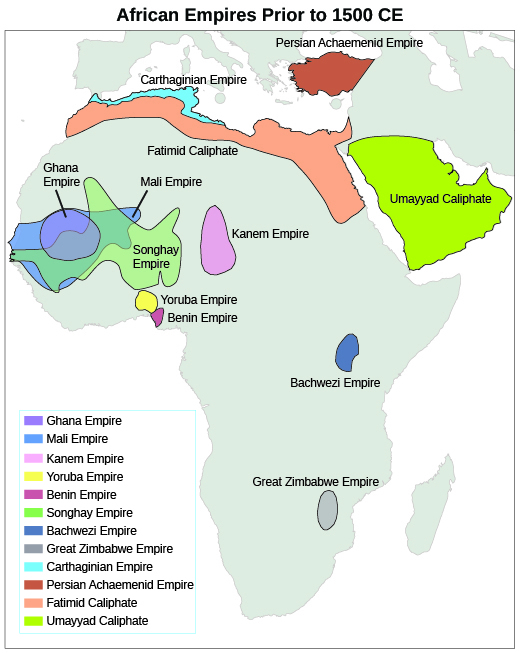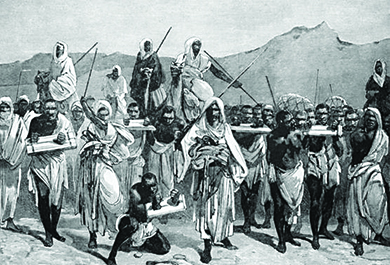| << Chapter < Page | Chapter >> Page > |

By 1200 CE, under the leadership of Sundiata Keita, Mali had replaced Ghana as the leading state in West Africa. After Sundiata’s rule, the court converted to Islam, and Muslim scribes played a large part in administration and government. Miners then discovered huge new deposits of gold east of the Niger River. By the fourteenth century, the empire was so wealthy that while on a hajj , or pilgrimage to the holy city of Mecca, Mali’s ruler Mansu Musa gave away enough gold to create serious price inflation in the cities along his route. Timbuktu, the capital city, became a leading Islamic center for education, commerce and the slave trade. Meanwhile, in the east, the city of Gao became increasingly strong under the leadership of Sonni Ali and soon eclipsed Mali’s power. Timbuktu sought Ali’s assistance in repelling the Tuaregs from the north. By 1500, however, the Tuareg empire of Songhay had eclipsed Mali, where weak and ineffective leadership prevailed.
The institution of slavery is not a recent phenomenon. Most civilizations have practiced some form of human bondage and servitude, and African empires were no different ( [link] ). Famine or fear of stronger enemies might force one tribe to ask another for help and give themselves in a type of bondage in exchange. Similar to the European serf system, those seeking protection, or relief from starvation, would become the servants of those who provided relief. Debt might also be worked off through a form of servitude. Typically, these servants became a part of the extended tribal family. There is some evidence of chattel slavery , in which people are treated as personal property to be bought and sold, in the Nile Valley. It appears there was a slave-trade route through the Sahara that brought sub-Saharan Africans to Rome, which had slaves from all over the world.

Arab slave trading, which exchanged slaves for goods from the Mediterranean, existed long before Islam’s spread across North Africa. Muslims later expanded this trade and enslaved not only Africans but also Europeans, especially from Spain, Sicily, and Italy. Male captives were forced to build coastal fortifications and serve as galley slaves. Women were added to the harem.
The major European slave trade began with Portugal’s exploration of the west coast of Africa in search of a trade route to the East. By 1444, slaves were being brought from Africa to work on the sugar plantations of the Madeira Islands, off the coast of modern Morocco. The slave trade then expanded greatly as European colonies in the New World demanded an ever-increasing number of workers for the extensive plantations growing tobacco, sugar, and eventually rice and cotton ( [link] ).

Notification Switch
Would you like to follow the 'U.s. history' conversation and receive update notifications?